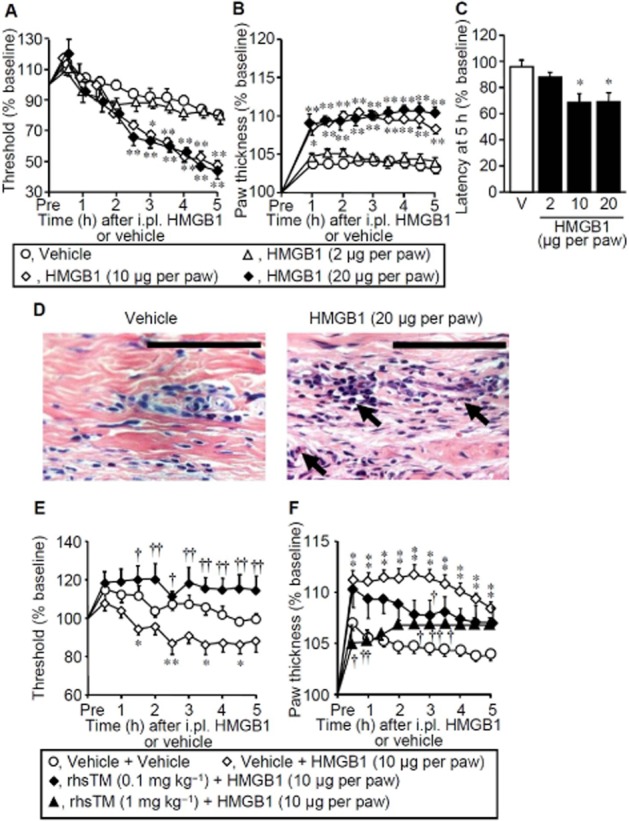Figure 1.

Hyperalgesia induced by exogenously applied HMGB1 and its inhibition by systemic administration of rhsTM in rats. (A–C) Time-courses of mechanical nociceptive threshold (A) and paw thickness (B) following i.pl. administration of HMGB1 at 2, 10 or 20 μg per paw or vehicle, and the paw withdrawal latency in response to thermal stimuli 5 h after i.pl. HMGB1 in rats (C). Data show the mean with SEM for four to five rats. *P < 0.05, **P < 0.01 versus vehicle. (D) Histopathological appearance of the hindpaw tissue 5 h after i.pl. administration of vehicle (left) or HMGB1 at 20 μg per paw (right) in rats. The tissue was stained with haematoxylin-eosin. Arrows show slight infiltration of polynuclear leukocytes. Bars indicate 100 μm. (E,F) Mechanical nociceptive threshold (E) and paw thickness (F) after i.pl. administration of HMGB1 in rats treated with rhsTM. rhsTM at 0.1 or 1 mg kg−1 or vehicle was administered i.p. 30 min before i.pl. administration of HMGB1 at 10 μg per paw or vehicle. Data show the mean with SEM for 5–11 rats. *P < 0.05, **P < 0.01 versus vehicle + vehicle; †P < 0.05, ††P < 0.01 versus vehicle + HMGB1.
